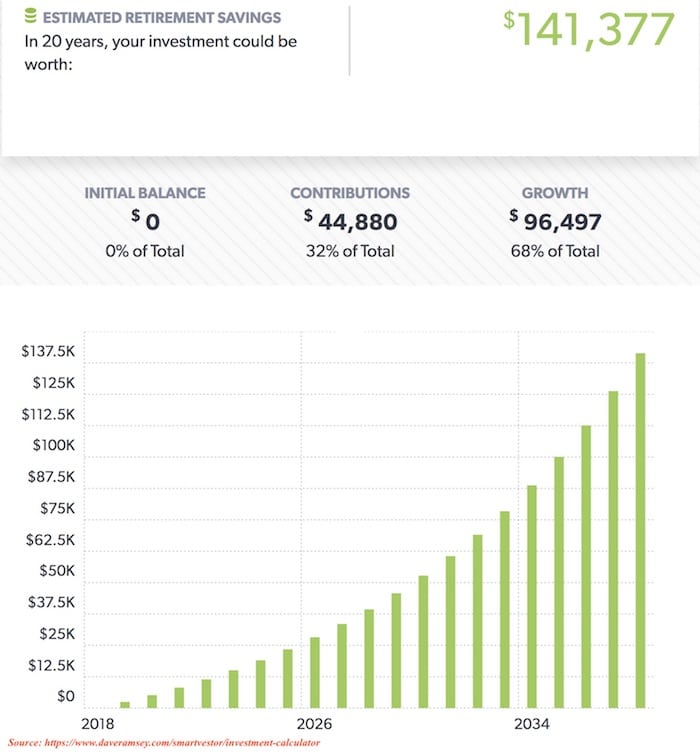If you’ve been following this blog for a while, you know I’m a huge fan of investing as a means to improve one’s quality of life. Even though most people get that it’s important at an intellectual level, they don’t take the steps to get actually started. A very common response is something along the lines of “I don’t have the money to start investing. Between the mortgage, car payment(s) and recurring expenses, there’s just not enough left.” Sound like anyone you know? The first two excuses are a bit more difficult to fix immediately. But that last one… recurring expenses.
I’m a firm believer that small recurring expenses are one of the biggest detriments towards building a financially fit future. They can literally lead to financial death by 1000 cuts. I’ll bet that if we take the next few minutes to really dig into where your money regularly goes, we’ll be able to find a few hundred dollars you don’t even realize you’re spending. It’s likely that some of the items discussed probably won’t apply to you. Let’s keep a running tally of the ones that do apply so that you can accurately assess the impact to your finances.
Small recurring expenses are one of the biggest detriments towards building a financially fit future. They can literally lead to financial death by 1000 cuts.
Ron Henry Click to Tweet
Cable Television
According to research performed in 2016 by the Leichtman Research Group, the typical American household spends $103.10 per month on their cable TV package. Tack on an additional $9.95 for each additional cable box. If we conservatively estimate that a household has 2 televisions, that brings the monthly cost for cable television to roughly $113 per month.
Cable TV: $113/month or $1356 annually
Internet Access
This one is difficult to answer since most providers offer first-year incentives for Internet access at cheaper prices. I obtained price quotes from Comcast, Charter, AT&T, and Verizon for basic Internet access. The pricing changes based on whether you bundle Internet with TV and phone service. Special incentives aside, the average price between them came out to approximately $45 per month.
Internet: $45 / month or $540 annually
Streaming Services
As cellular and broadband networks have gotten faster, music and video streaming services have become much more commonplace. The following list reflects the mid-2018 prices for these services. Add the one(s) that apply in your situation to your running tally.
- Spotify Premium: $9.99 / month or $120 annually
- Pandora Premium: $9.99 / month or $120 annually
- Apple Music: $9.99 / month or $120 annually
- Hulu: $7.99 / month or $96 annually
- Netflix: $13.99 / month or $168 annually
- YouTube TV: $40 / month or $480 annually
- YouTube Premium: $9.99 / month or $120 annually
Cellular Phone Plan
After reviewing several surveys and visiting the websites of the most popular providers, I found the average monthly price paid for an individual cell phone plan in the U.S. is approximately $70. This is devoid of any extras like tethering which can raise the price substantially. Mind you, this is for only the primary account. Although there are often incentives for having a family plan of multiple lines and users, the additions can significantly increase monthly recurring expenses.
Cell Phone: $70 / month or $840 annually
Landline Phone Service
Believe it or not, some people still have land lines. If you have a cell phone as well, that’s an easy recurring expense you might consider eliminating. A land line with unlimited local phone calls typically goes for $30 per month. Unless you live in an area with poor cell coverage, there’s little reason to keep both a cell phone and landline.
Landline: $30 / month or $360 annually
Dining Out
This is a biggie. According the U.S. Bureau of Labor Statistics the average American household spends over $3000 per year eating out. For several people I know personally that figure is low. Very low. If you’re having difficulty finding enough discretionary income to get your investing started, this a great place to look. Even reducing the number of times you eat out by 1 will make a difference over time.
Dining Out: $250 / month or $3000 annually
Gym Membership
Research shows the average gym membership costs about $40 per month. If you’re having difficulty freeing up income, you might consider working out at home for free. You’d be amazed at how a regular calisthenics routine done at home will transform your body and finances over time. YouTube is a great source for free workout routines so you don’t get bored.
Gym: $40 / month or $480 annually
The Curious Case of “Nathan Normspend”
Now that we’ve defined the average cost for many of the common recurring expenses, let’s build a profile that’s likely to represent most people. Adjust the list as you see fit and come up with your personal number. For demonstration purposes, we’ll call our fictional character “Nathan Normspend”. Nathan is a pretty normal guy in that he has cable TV, Internet access, a couple of streaming services and a cell phone. Because he’s also quite the social butterfly he eats out a few times per week with his friends.
This is how his monthly recurring expenses look:
- Cable: $113
- Internet Access: $45
- Spotify: $10
- Netflix: $14
- Cell Phone: $70
- Dining Out: $300
That comes up to a grand total of $552 per month or $6,624 per year. What are some things Nathan can do to reduce his recurring expenses so that he can begin investing?
Recurring Expenses Analysis
Let’s look at that cable TV bill. Because Nathan has high speed Internet, he can move away from traditional cable to a broadcast streaming service like YouTube TV. Going from $113 to $40 instantly makes $73 available. There’s also no additional cost for more than one television.
Nathan will probably soon find that he doesn’t really need Netflix anymore since he has a decent catalog of streaming video with his YouTube TV account. This increases his available monthly cash by $14. Next, what if we could convince him to reduce how often he eats out. Figure if he packs lunch a few days per week and skips that morning designer latte, we can go from $300 per month dining out to $200. A spending reduction of $100. He’s able to increase his free cash flow with only with a few sacrifices along the way!
Let’s recap. Nathan has freed up $73, $14, and $100 additional dollars by simplifying his entertainment and not dining out quite as frequently. He now has an additional $187 in his pocket. $187 per month might not seem like much to invest with but over time what it can turn into will really surprise you.
If Nathan were to invest his newly-found $187 in an index fund returning 10% for the next 20 years, he’ll have contributed a total of $44,880. That money compounds and grows to an impressive $141,377. Not bad for eating out a bit less each week and modifying how he gets his entertainment.
Investment Metrics:
- Monthly Investment: $187
- Compound Rate: 10%
- Total Contributions: $44,880
- Account Value in 20 Years: $141,377

This really highlights that small amounts do add up over time. Nathan didn’t have to make huge sacrifices to begin putting some money away. Were he to increase his savings rate, really incredible things would start to happen with the numbers.
It’s important to note that we’ve focused on generic recurring expenses. Shaving clubs, clothing subscriptions, and personal services like massages, manicures, and pedicures should also be closely scrutinized. What do you think? Has Nathan’s example opened your eyes to what’s possible? What are the ways you can make small adjustments to your recurring expenses that will increase your ability to invest? Let me know in the comments below!
A great FREE tool I personally use for tracking my portfolio is Personal Capital. When you click this link to sign up for your free account, both you and I will receive $20. Every little bit helps right?




